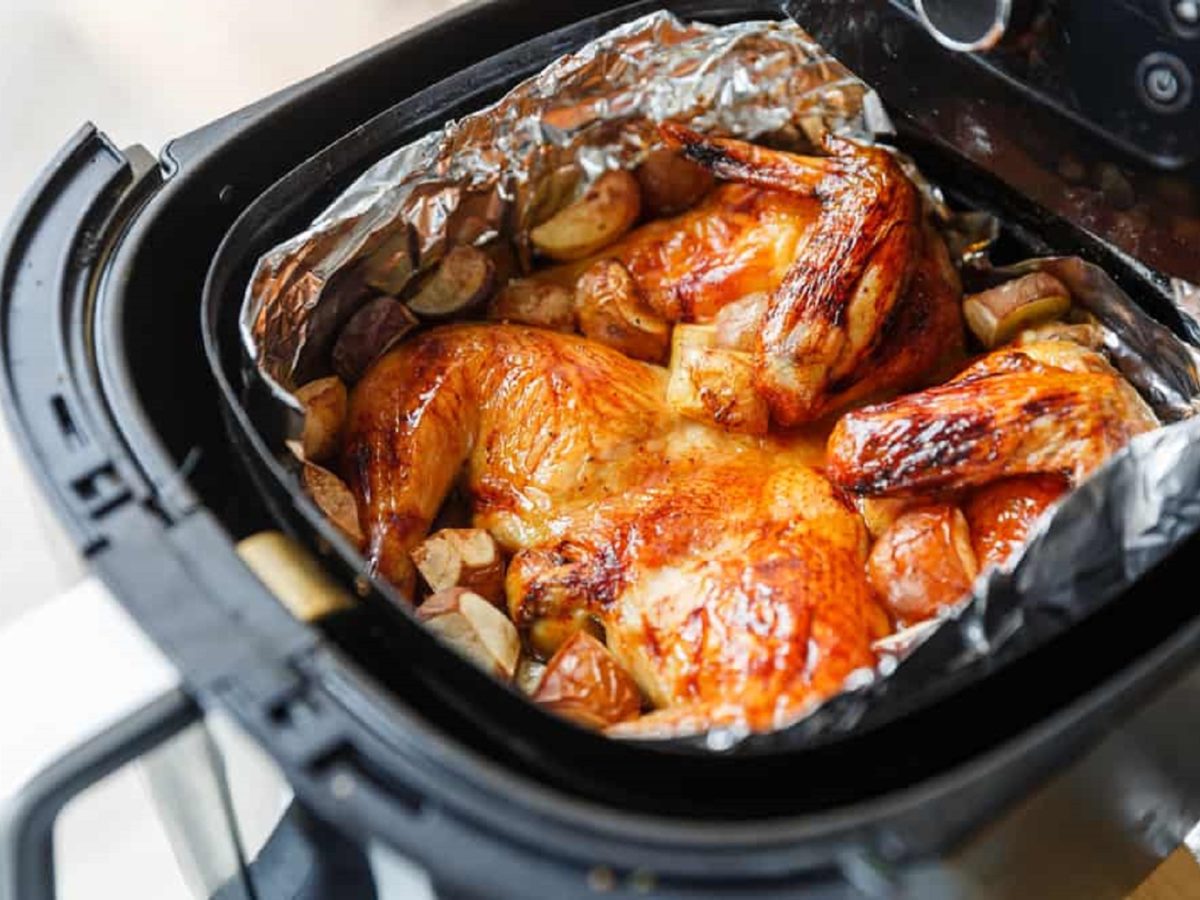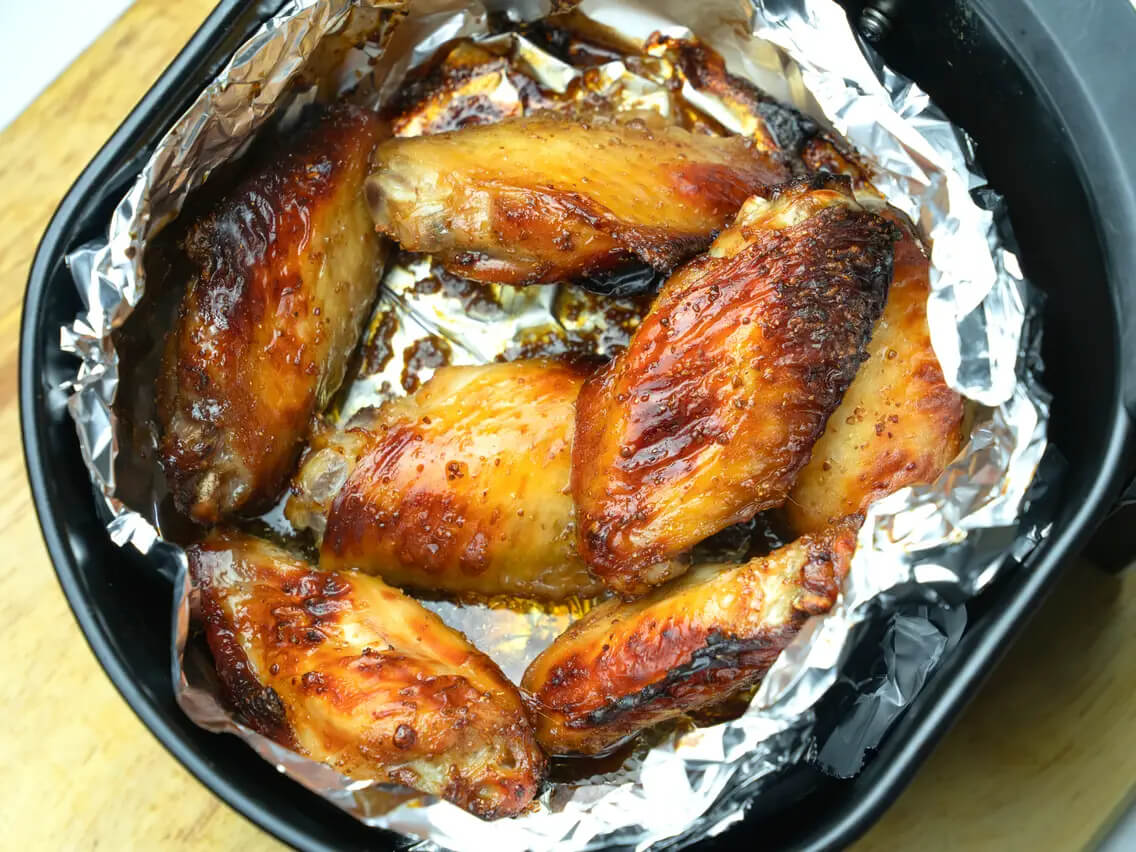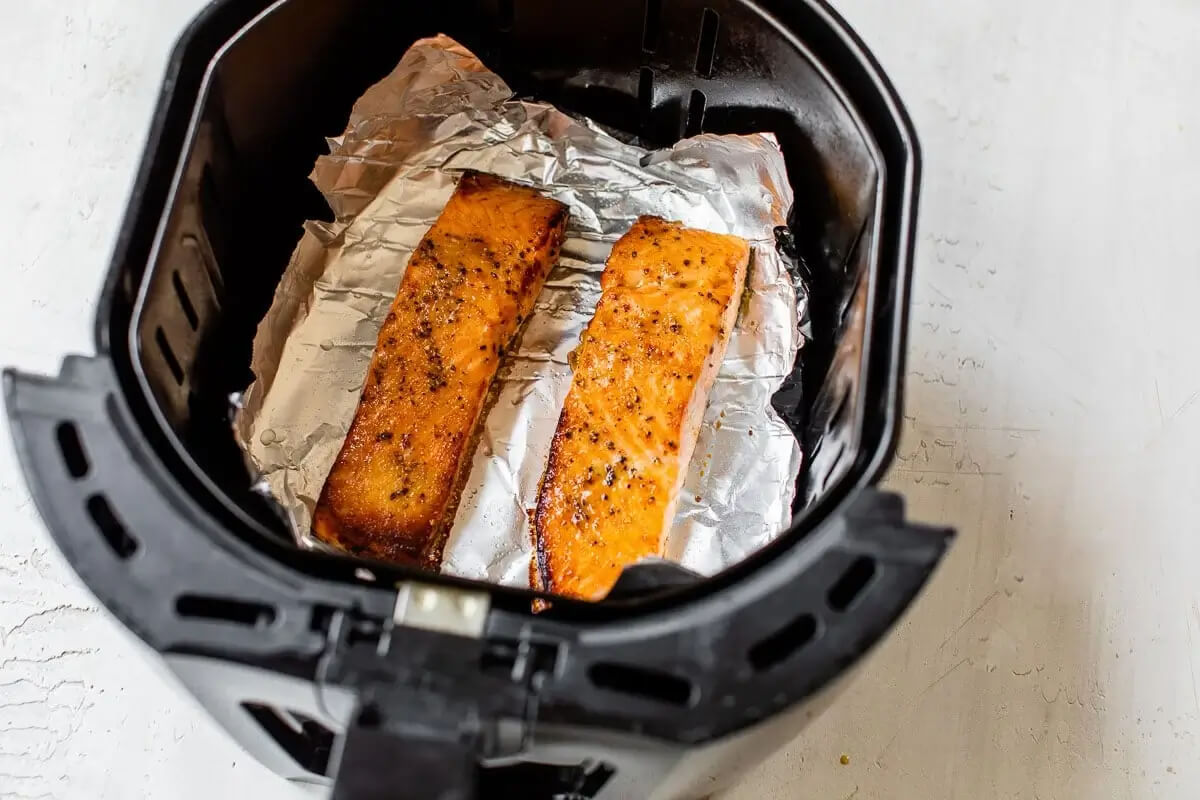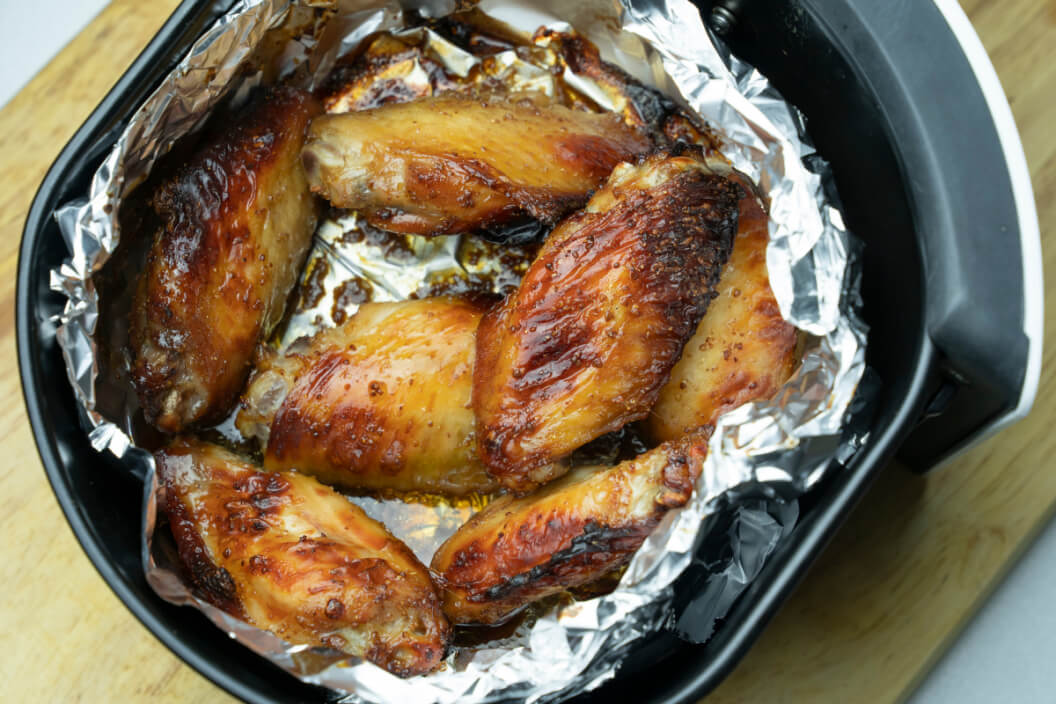Air fryers have revolutionized home cooking by offering a healthier alternative to deep frying. But as these appliances become kitchen staples, questions about proper usage inevitably arise.
One of the most debated topics is whether aluminum foil, a common kitchen helper, is safe to use in air fryers. Let’s unpack the science, risks, and best practices to help you make informed decisions.
Most people are wondering is aluminum foil safe in air fryer.
Look:
If you are concerned can we use aluminum foil in air fryer or is it okay to put foil in air fryer, you need to check this post.
We introduce everything about is foil safe in air fryer and tips to use aluminum foil in air fryer.
You will get useful knowledge on air fryer cooking safety and we also supply aluminum foil in bulk wholesale for you to wholesale.
Is aluminum foil safe in air fryer
 You can use aluminum foil in the air fryer.
You can use aluminum foil in the air fryer.
Aluminum foil is a material with good thermal conductivity. It can quickly transfer the heat from the surface of the food to the inside, so that the food is evenly heated. The baked food is crispy on the surface and tender on the inside, and the intake of fat can be effectively controlled.
In addition, aluminum foil can also prevent the food from directly contacting the bottom of the air fryer, reducing the risk of cleaning.
Aluminum foil is resistant to high temperatures and can withstand temperatures above 600°C, so there is no need to worry about fire when using it in an air fryer.
The operating temperature of an air fryer usually does not exceed 300 degrees, it is much lower than the melting point temperature of aluminum foil.
Therefore, using aluminum foil is a safe choice when using an air fryer.
can you put foil in air fryer
Aluminum foil can be put into the air fryer for use. The melting point of tin foil is very high, and the temperature of the air fryer is not enough to ignite the tin foil, so it can be used with confidence.
can we use aluminum foil in air fryer
 You can use aluminum foil in air fryer and there is no harmful elements for people health regarding the aluminium foil.
You can use aluminum foil in air fryer and there is no harmful elements for people health regarding the aluminium foil.
However, the following points should also be noted during use aluminum foil in air fryer:
1. Avoid folding too much: Aluminum foil should not be folded too much to avoid affecting the conduction and reflection of heat, resulting in poor cooking results.
2. Do not cover too much food: When using aluminum foil, be careful not to completely cover the food to avoid affecting the surface heating of the food and resulting in poor taste of the food.
3. Check the condition of the aluminum foil regularly: After using the aluminum foil, check its condition regularly. If it is damaged or deformed, replace it in time to avoid affecting the cooking effect
Is it okay to put foil in air fryer
 It is OK for you to put foil in the air fryer. The melting point of aluminum foil is very high, and the temperature of the air fryer is not enough to ignite the foil, so it can be used in air fryer safely.
It is OK for you to put foil in the air fryer. The melting point of aluminum foil is very high, and the temperature of the air fryer is not enough to ignite the foil, so it can be used in air fryer safely.
The benefits of use aluminum foil in air fryer

- Even heating: Aluminum foil can make food heat more evenly and avoid partial overheating or overcooling of food.
- Lock in moisture: Aluminum foil can effectively lock in the moisture of food and keep the food fresh and tender.
- Easy to clean: Using aluminum foil can prevent food from sticking to the wall of the fryer and the bottom of the food basket, reducing the difficulty of cleaning.
Precautions when using aluminum foil in air fryer
Use alu food foil in moderation: Do not cover the entire bottom of the air fryer with aluminum foil. Leave enough space for air circulation to ensure that the hot air can circulate evenly.
Avoid direct contact with the heating element: Make sure that the aluminum foil does not come into direct contact with the heating element of the air fryer to avoid safety hazards.
Prevent sliding: You can place some food under the aluminum foil to ensure that it is fixed in a certain position to prevent sliding.
Avoid acidic ingredients: Acidic ingredients (such as tomatoes, lemons, etc.) may react with aluminum, affecting the taste and safety of food. Try to avoid long-term contact.
1. The Basics: How Air Fryers Work
Air fryers rely on rapid hot air circulation to cook food, mimicking the crispiness of fried dishes with minimal oil. The heating element and fan work together to distribute heat evenly around the cooking basket. However, this design means that anything blocking airflow—like improperly placed foil—can disrupt cooking efficiency or even damage the appliance.
Aluminum foil, while versatile, is not inherently designed for air fryers. Its safety depends on how and where it’s used.
2. When Is Aluminum Foil Safe?
Most air fryer manufacturers, including Philips and Ninja, approve limited foil use under specific conditions:
-
Lining the Basket (Partially):
A small sheet of foil at the bottom can catch drips from greasy foods like sausages or bacon. However, ensure it doesn’t cover more than 50% of the basket. Over-lining blocks airflow, leading to uneven cooking or overheating.
-
Wrapping Delicate Foods:
Foil “packets” protect items like fish fillets or asparagus from direct heat, preventing them from drying out. Poke a few holes in the foil to allow steam to escape.
-
Preheating Consideration:
Never place foil in an empty air fryer during preheating. The intense, unfiltered airflow can cause the foil to lift and touch the heating element, posing a fire risk.
3. The Risks You Shouldn’t Ignore
While foil isn’t a kitchen villain, misuse can lead to problems:
-
Airflow Disruption:
A fully lined basket forces the fan to work harder, straining the motor. Over time, this may shorten the appliance’s lifespan.
-
Chemical Leaching Concerns:
Aluminum can react with acidic foods (tomatoes, citrus, vinegar-based marinades) at high temperatures. While the FDA considers small amounts of aluminum migration safe, frequent exposure remains controversial. If you’re health-conscious, avoid wrapping acidic ingredients directly in foil.
-
Fire Hazards:
Crumpled foil edges or loose pieces might contact the heating coil, sparking a fire. Always smooth out foil and secure it under food to prevent movement.
4. Safer Alternatives to Aluminum Foil
For those wanting to eliminate risks entirely, consider these options:
-
Silicone Liners:
Reusable, non-stick silicone mats designed for air fryers allow airflow while simplifying cleanup. Brands like Kana and OXO offer FDA-approved options.
-
Parchment Paper:
Perforated parchment sheets (pre-cut for air fryers) are heat-resistant up to 450°F and won’t block vents. Avoid generic parchment, as it may curl and obstruct the fan.
-
Oiled Basket Method:
A light spray of avocado oil on the basket itself can prevent sticking without needing foil.
5. Pro Tips for Safe Foil Use
If you still prefer foil, follow these guidelines:
- Use Heavy-Duty Foil: Thicker foil (18+ microns) is less likely to tear or blow around.
- Avoid Contact with Heating Elements: Keep foil at least 1 inch away from the top coil.
- Weight It Down: Place food on top of foil to anchor it.
- Skip the Shiny Side: Contrary to myth, both sides of foil perform equally. The “shiny vs. dull” distinction is a manufacturing artifact.
6. What Do the Experts Say?
The USDA hasn’t banned foil in air fryers but advises caution. A 2023 study in Food Science & Nutrition found no significant aluminum migration when foil was used below 400°F with non-acidic foods. However, Dr. Emily Carter, a food safety specialist, warns: “If your air fryer manual prohibits foil, respect that—manufacturers test their products rigorously.”
The bottom line
Aluminum foil can be air fryer-safe if used judiciously. Prioritize your appliance’s manual, avoid blocking vents, and steer clear of acidic ingredients. For daily use, silicone or parchment alternatives offer peace of mind. Remember: Air fryers thrive on airflow—anything that compromises that undermines their purpose.
Conclusion
Air fryers can use aluminum foil, but you need to pay attention to some details during use. Proper use of aluminum foil can allow us to enjoy the fun of cooking better and also reduce the burden of cleaning. However, we should also note that the use of aluminum foil is not necessary. You can choose whether to use it according to your personal cooking habits and food types.



